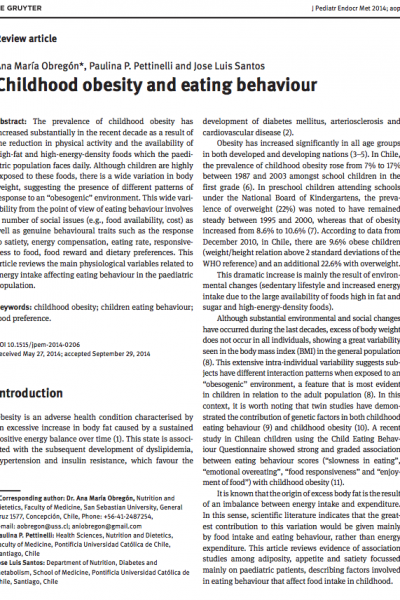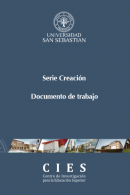
Childhood obesity and eating behaviour
| PROCEDENCIA(S): | Centro de Salud USS, Ciencia y Medicina, Ciencias de la Salud, Ciencias para el Cuidado de la Salud, IPSUSS. |
|---|---|
| CATEGORÍA(S): | Ciencias del Deporte y Acondicionamiento Físico, Endocrinología y Metabolismo, Medicina y Ciencias de la Salud, Nutrición y Dietética, Pediatría, Políticas de Salud y Servicios, Psicología. |
| AUTOR(ES): | Ana Mar í a Obregón, Paulina P. Pettinelli and Jose Luis Santos. |
| TIPO DE MATERIAL: | Artículos. |
| ARCHIVO: |
 Reconocimiento-NoComercial-SinObraDerivada CC BY-NC-ND. Esta obra está bajo una Licencia Creative Commons Reconocimiento-NoComercial-SinObraDerivada CC BY-NC-ND 4.0 Internacional.
Reconocimiento-NoComercial-SinObraDerivada CC BY-NC-ND. Esta obra está bajo una Licencia Creative Commons Reconocimiento-NoComercial-SinObraDerivada CC BY-NC-ND 4.0 Internacional.
Abstract: The prevalence of childhood obesity has increased substantially in the recent decade as a result of the reduction in physical activity and the availability of high-fat and high-energy-density foods which the paediatric population faces daily. Although children are highly exposed to these foods, there is a wide variation in body weight, suggesting the presence of different patterns of response to an “ obesogenic ” environment. This wide variability from the point of view of eating behaviour involves a number of social issues (e.g., food availability, cost) as well as genuine behavioural traits such as the response to satiety, energy compensation, eating rate, responsiveness to food, food reward and dietary preferences. This article reviews the main physiological variables related to energy intake affecting eating behaviour in the paediatric population.


